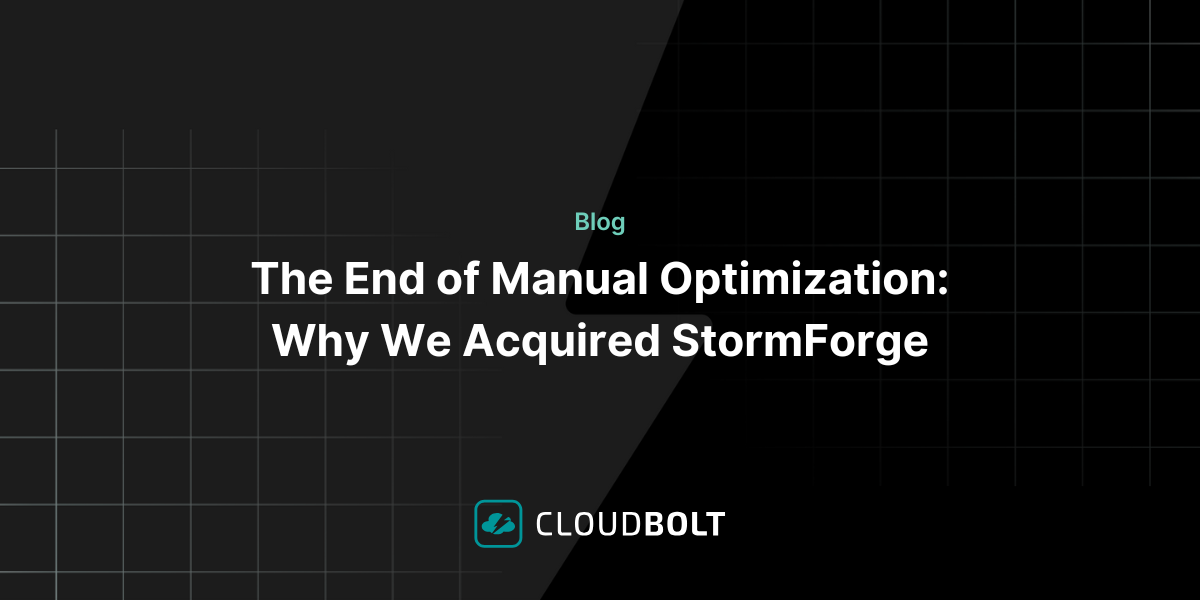Are Manual FinOps Processes Holding You Back? Here’s How Adopting More Mature Automation Can Help
In a world where advancements in technology and innovation are moving at breakneck speed, FinOps is crawling at a snail’s pace. Whether it’s curating reports, tagging resources, or forecasting cloud spend, many FinOps teams currently rely heavily on manual processes. This limited and outdated approach prevents FinOps from delivering the business value it should and can.
If your team is struggling with manual workflows, our Ready to Run: A Guide to Maturing Your FinOps Automation eGuide provides actionable strategies to transition from manual processes to full automation, driving efficiency and greater ROI.
But first, let’s explore why manual FinOps processes are no longer enough.
The Problem with Manual FinOps Processes
At first glance, manual processes may seem manageable, especially for smaller cloud environments or early-stage FinOps teams. But as cloud usage grows, the limitations of manual FinOps quickly become apparent:
- Slower decision-making: Gathering cloud cost data from multiple sources, compiling reports, and manually assigning optimization tasks takes significant time. By the time the data is ready, it’s often outdated, leaving teams to make decisions based on information that no longer reflects real-time cloud usage. This delay not only slows down strategic decisions but can also affect the company’s ability to react to cost spikes or over-provisioning in a timely manner.
- Inconsistent processes: When different departments handle cloud costs manually, there’s little to no standardization or cross-learning between teams. This lack of coordination leads to inefficiencies, duplication of efforts, and a higher risk of errors in cost allocation and reporting. Without a unified process, departments might adopt conflicting methodologies, further complicating cost visibility and governance.
- Missed optimization opportunities: Without access to real-time, actionable insights, FinOps teams are often forced to rely on retrospective data. This prevents them from identifying and acting on immediate cost-saving opportunities, such as rightsizing resources or taking advantage of reserved instance discounts. As a result, the organization continues to accrue unnecessary cloud spend, which compounds over time and erodes potential savings.
If any of this sounds familiar, it’s time to start thinking about automation.
Ready to Run: A Guide to Maturing Your FinOps Automation
Download the Guide

How Automation Transforms FinOps
FinOps automation is about more than just speeding up processes—it’s about empowering teams to act faster, make smarter decisions, and ultimately drive greater ROI from cloud investments. Here are three key areas where automation can make an immediate impact:
1. Real-Time Insights
Manual FinOps processes mean relying on historical data to make decisions, which can be outdated by the time teams act on it. Automation provides real-time visibility into cloud usage, costs, and performance, enabling FinOps teams to act quickly and decisively. This immediate access to current data helps organizations proactively manage their cloud environments, preventing unnecessary spend before it happens and empowering teams to course-correct when anomalies arise.
2. Cost Optimization at Scale
Automation tools continuously monitor cloud resources and make real-time adjustments to optimize usage without requiring human intervention. Whether it’s rightsizing instances or decommissioning idle resources, automation ensures that cloud environments are always running at peak efficiency. This proactive approach to cost optimization helps FinOps teams keep spending under control, even as cloud usage scales and becomes increasingly complex. The result is not just reduced costs but also the ability to handle optimization at a scale that would be impossible with manual processes.
3. Standardized Workflows
Without automation, different teams may use their own methods to manually manage cloud costs, leading to inconsistencies and potential errors. Automation enables standardized workflows that ensure consistency, accuracy, and accountability across the organization. These workflows establish a unified approach to cloud cost management, reducing the risk of oversight and providing a single source of truth for all teams to rely on. This standardization helps streamline decision-making and fosters cross-department collaboration, ultimately creating a more efficient FinOps culture.
Start Your Automation Journey Today
The longer FinOps teams rely on manual processes, the more they risk falling behind in today’s fast-paced cloud landscape. Automation is the key to scaling your operations, driving greater efficiency, more accurate forecasting, and a stronger strategic impact.
Ready to accelerate your FinOps journey? Download Ready to Run: A Guide to Maturing Your FinOps Automation to understand where your team stands in its automation maturity and unlock strategies to transform your operations.
Related Blogs

The End of Manual Optimization: Why We Acquired StormForge
Today is a big day for CloudBolt—we’ve officially announced our acquisition of StormForge. This marks a major milestone for us…

